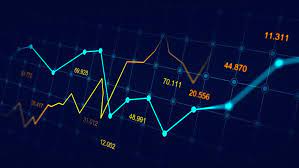Strategies for Scalping Profits from the Forex Market
In the world of forex trading, leverage is a term commonly used to describe the amount of funds that a trader can borrow from a broker to open a larger position in the market. It is the ratio of the trader’s funds to the amount of credit provided by the broker. This is the reason why forex trading is often associated with high risk and high returns. In this blog post, we will explore the concept of leverage in depth, how it works, what are the risks and rewards involved, and how to manage it effectively to maximize profits.
How leverage works:
When you open a forex trade, you are required to deposit a margin with your broker, which is a percentage of the total contract value. The margin acts as a security deposit, ensuring that you have enough funds to cover the potential losses in case the market moves against you. Your broker will then lend you the remaining funds required to open the trade. This is known as leverage. For example, if you have a leverage of 100:1, then for every $1 of margin you deposit with your broker, you can open a trade worth $100.
The risks and rewards of leverage:
Leverage can magnify your profits as well as your losses. If the trade moves in your favor, you can make a significant profit even with a small amount of margin. However, if the trade moves against you, then the losses can be equally magnified. This is why it’s essential to manage your leverage carefully and not to risk more than you can afford to lose. Always use stop-loss orders to limit your losses and take-profit orders to secure your profits.
How to manage leverage:
One way to manage leverage is to choose your position size wisely. As a rule of thumb, traders should never risk more than 1-2% of their capital on a single trade. This means that if you have $10,000 in your trading account, you should only risk $100-$200 per trade. Also, make sure that you have enough margin to cover any potential losses. If your account is undercapitalized, then avoid using high leverage, as it can wipe out your account quickly.
The benefits of low leverage:
Using low leverage can be advantageous for many reasons. It allows you to hold onto your trades for a more extended period, giving them enough time to mature. It also reduces your trading costs, as the lower leverage means lower margin requirements and lower swap rates. Most importantly, it protects your trading account from volatility, giving you enough breathing space to plan your trades strategically.
Conclusion:
Understanding leverage is a crucial part of forex trading. It is a double-edged sword that can either make you a fortune or break you. However, by managing your leverage effectively, you can minimize your risks and unlock its potential rewards. Always remember to use low leverage, choose your position size wisely, and never risk more than you can afford to lose. With a disciplined approach, you can turn leverage to your advantage and make consistent profits in the forex markets.

